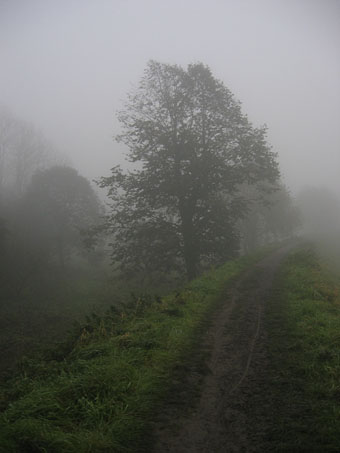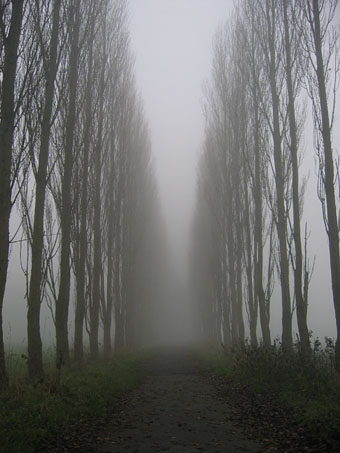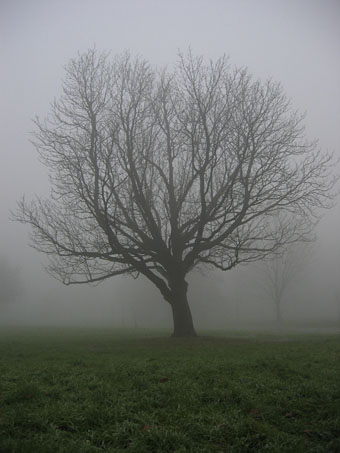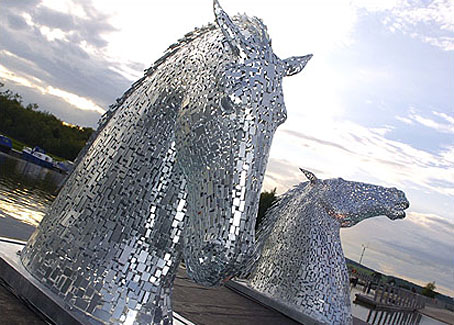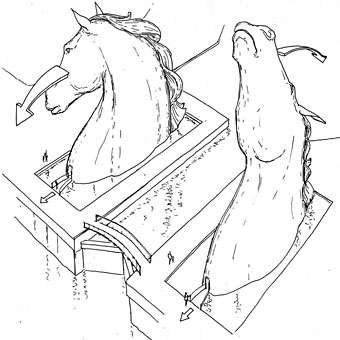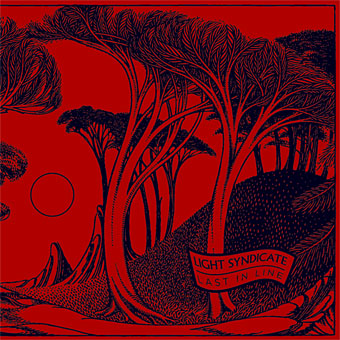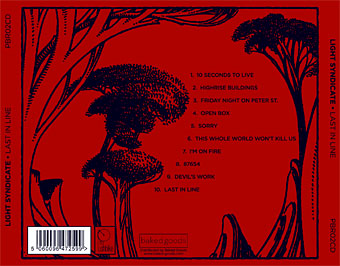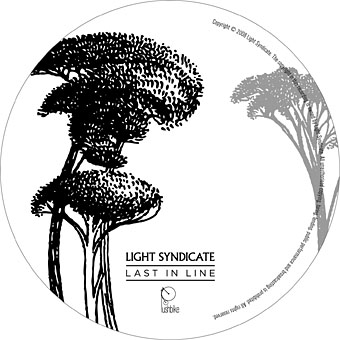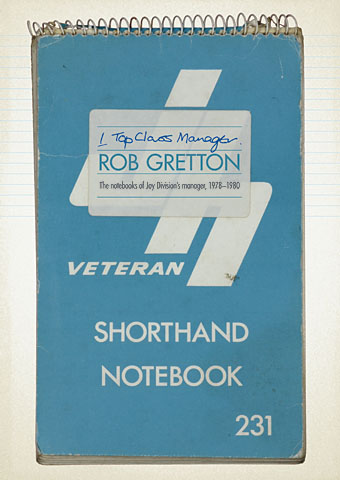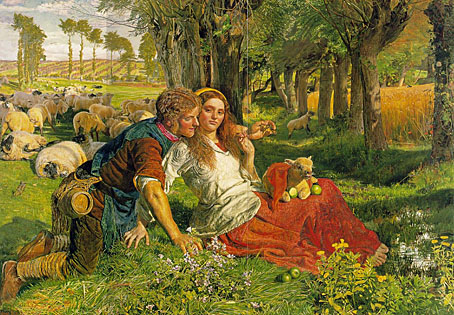No sun–no moon!
No morn–no noon!
No dawn–no dusk–no proper time of day–
No sky–no earthly view–
No distance looking blue–
No road–no street–no “t’other side this way”–
No end to any Row–
No indications where the Crescents go–
No top to any steeple–
No recognitions of familiar people–
No courtesies for showing ’em–
No knowing ’em!
No travelling at all–no locomotion–
No inkling of the way–no notion–
“No go” by land or ocean–
No mail–no post–
No news from any foreign coast–
No Park, no Ring, no afternoon gentility–
No company–no nobility–
No warmth, no cheerfulness, no healthful ease,
No comfortable feel in any member–
No shade, no shine, no butterflies, no bees,
No fruits, no flowers, no leaves, no birds–
November!
That poem by Thomas Hood (1799–1845) pins down some of the reasons why I’m usually glad to see the back of this month. The weather this weekend has been the kind of cold and mist for which the word “dreary” might have been specially created. A thin smear of mist, quite unworthy of photographic effort. Three years ago, another November afternoon spent walking along the South Manchester stretch of the River Mersey yielded these fog-drenched views.

